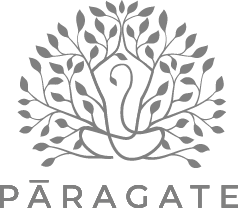The prevalence of back pain is increasing due to a sedentary lifestyle and heavy reliance on technology. Combining weekends for physical exercise is a compensatory approach. Understanding this, orthopedic experts have conducted research and recommended Pilates exercises for those suffering from back pain. So, what are the effects of Pilates exercises on back pain? Let’s explore in the following article!
Pilates is a fitness method that combines a series of activities aimed at enhancing health and muscle strength. Properly designed Pilates exercises can increase body flexibility, strengthen muscles, boost mental resilience, and provide greater flexibility and a balanced physique. The effects of Pilates exercises on back pain are as follows.

Pilates exercises help balance the hips and pelvis.
The main cause of back pain is the imbalance in the hips and pelvis. Habits such as standing on one side of the hip and crossing legs can lead to an imbalance in the pelvis, resulting in back pain.
Pilates exercises are designed to address this imbalance and counteract the effects of such postures. For example, a series of leg swings on the Cadillac machine and leg exercises on the reformer machine illustrate the detailed illustration of both sides of the human body. These two exercises, engaging the abdominal muscles and lengthening the spine, work together in parallel. They ensure a more flexible and stronger back for you.
When these exercises are combined with a highly skilled Pilates instructor, hidden issues such as one hip sitting higher, one leg being more active than the other, etc., will be adjusted and stabilized, reducing tension in the back muscles.

Pilates exercises are an effective antidote for back pain.
Absolutely! Pilates can be considered an antidote to the modern lifestyle’s direct impact on the back. Office workers, frequent drivers, and those who sit for extended periods often experience tight muscles and weakened glutes.
These symptoms can pose a risk of the spine tilting forward, leading to constant lower back tension. Similarly, individuals who spend a lot of time looking at their phones tend to slouch forward.
When practicing Pilates with specialized exercises, it emphasizes a neutral spine. This promotes an ideal posture that balances the natural curves, ensuring the strength of the lower, upper, and middle back muscles.

Pilates exercises are a relaxing way to relieve muscle tension.
A single Pilates exercise can also bring surprising relief from back pain, similar to the effects of specialized massage therapy for back pain. However, to achieve long-term results and prevent future back pain flare-ups, it’s recommended to practice Pilates 2-3 times a week consistently for 4-6 weeks, which will yield noticeable results.
Please note that you shouldn’t overexert yourself or exercise for extended hours, even with short muscle-stretching Pilates exercises. It’s advisable to seek guidance from a professional Pilates instructor to ensure you perform spinal adjustments and postures correctly. Furthermore, not all Pilates exercises are suitable for back pain. If you’re experiencing back pain, exercises involving excessive rolling, twisting, or bending may not be suitable. These movements can worsen spinal discomfort and lead to back pain flare-ups during the exercise.
Above are the effects of Pilates exercises on back pain shared by orthopedic experts. These effects can help you achieve a stable body with a well-aligned spine and pelvis, similar to that of weightlifters. Listen to your body and focus on the quality of movement, and consider visiting Paragate Yoga & Pilates to experience professional and effective exercises beyond your expectations!



